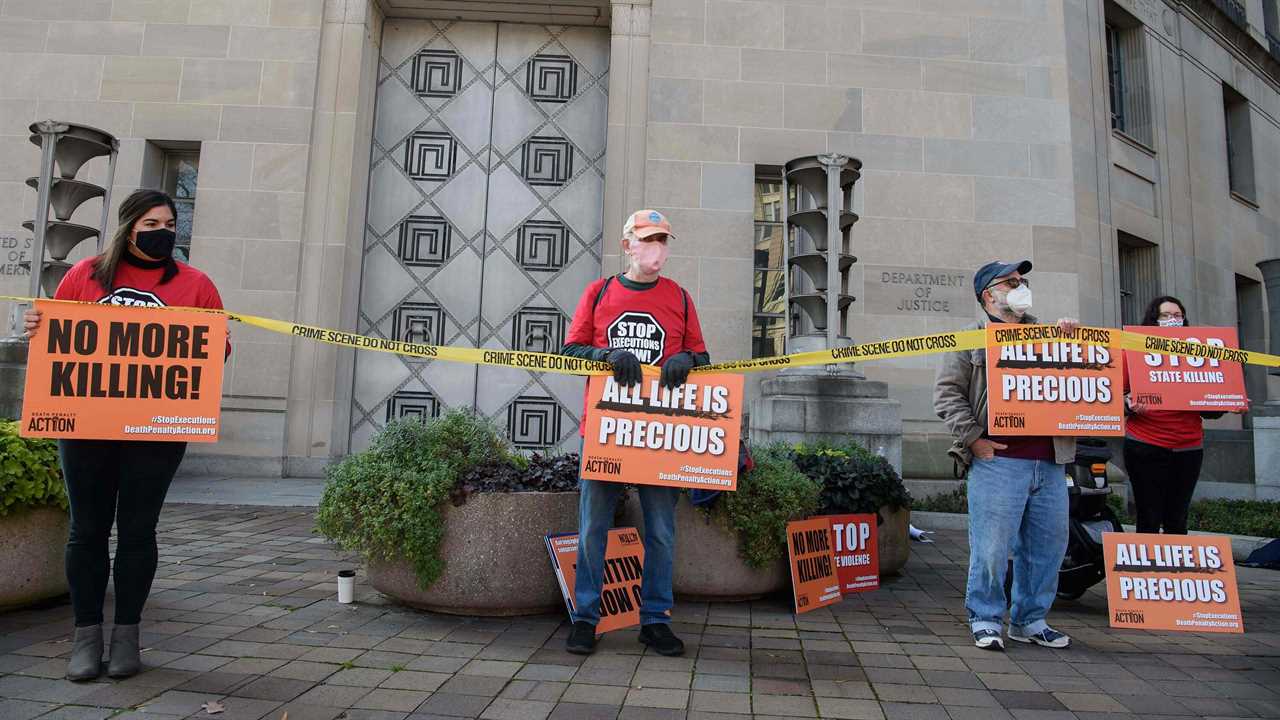
WASHINGTON — In part because of the effects of the pandemic on the criminal justice system, the number of executions in the United States fell this year to the lowest level since 1991 despite the Trump administration’s revival of the federal death penalty, according to a study released on Wednesday.
The report, from the Death Penalty Information Center, said seven prisoners were executed by states, the lowest number since 1983. The center attributed the decline in executions as well as a drop in new death sentences to court closures and public health concerns related to the coronavirus, but also cited a long-term trend away from capital punishment in much of the country.
By contrast, the federal government executed 10 prisoners, the highest number of federal civilian executions in a single calender year in either the 20th or 21st century. The surge — the first time the federal government has executed more civilian prisoners than all the states combined — was the result of a decision by the Trump administration to end an informal 17-year moratorium on capital punishment for federal crimes.
President-elect Joseph R. Biden Jr. has said he will work to end federal capital punishment, but the Justice Department has three more executions scheduled in the first half of January before he takes office.
Robert Dunham, the executive director of the Death Penalty Information Center, which does not categorically oppose the death penalty but has been critical of its use, said that while the year’s numbers were distorted by the pandemic, states and the federal government faced the same virus but responded very differently.
“At the time that almost every state was making the safety of its citizens a higher priority than executing prisoners, the federal government decided that it was more important for it to carry out a rash of executions without complete judicial review of those cases in circumstances that placed the public health at risk,” he said.
Attorney General William P. Barr announced in July 2019 that the government would execute five men in the coming months, an effort that the courts thwarted shortly before the executions were set to begin. The Supreme Court subsequently cleared the way for the Trump administration to resume capital punishment in June and has allowed each of the executions to proceed.
In what became its final year, the administration also moved to allow additional available means of execution, such as firing squads or electrocution. The 17-year hiatus of the federal death penalty was largely a result of legal challenges and unavailability of the lethal injection drugs, said Charles Stimson, a senior legal fellow at the Heritage Foundation, a conservative think tank. He said the administration simply continued the tradition of federal capital punishment authorized by the Constitution.
“If we’re going to uphold the rule of law, eventually you have to carry out the effect of the rule of law,” Mr. Stimson said.
But this year, the total number of executions by both states and the federal government fell to 17 from 22 last year, according to the report.
Latest Updates
- The F.D.A. green lights a $25 at-home antigen virus test.
- A W.H.O. team will travel to China to hunt the source of the coronavirus.
- Nursing homes grapple with logistics as they prepare for vaccinations.
The coronavirus has spread through correctional facilities across the country, complicating death penalty procedures and killing some death row inmates before states could put them to death. Courts in Texas halted or delayed eight executions, and four more were delayed in Tennessee by court order or by the governor, the report said. Of the 62 execution dates set this year, only 17 were carried out.
Unlike the states, the federal government kept largely to its schedule despite the dangers of the pandemic.
Two lawyers for Lisa Montgomery, the only woman on federal death row who is scheduled for execution, contracted the coronavirus after visiting their client. And a declaration in court from a Bureau of Prisons official revealed that eight members of the team that conducted a federal execution in November at the prison complex in Terre Haute, Ind., where hundreds of cases have been reported, later tested positive for the virus.
The coronavirus forced states to temporarily close their courts, a major factor that led to the fewest new death sentences imposed in any year since the Supreme Court struck down existing death penalty statutes in 1972, the report said.
Support for the death penalty in murder cases has hovered around 55 percent since 2017, according to a Gallup poll.
Robert Blecker, a professor emeritus at New York Law School, said support for the death penalty in polling was largely dependent on how the question was phrased. Support will rise if the question states the circumstances and “cruelty involved in the killing,” he said.
Colorado this year became the 22nd state to abolish the death penalty, and 12 others have not carried out an execution in at least a decade, according to the center’s report.
Additionally, voters in at least nine major counties elected new district attorneys who pledged to abandon the death penalty or use it sparingly. Those counties make up 12 percent of the current death row population, the report said.
In all likelihood, the number of executions and death sentences in 2021 and 2022 will rise as the pandemic fades, said Mr. Dunham, the lead author of the report. But those scheduled to die under the Trump administration will most likely be the last federal executions for at least as long as Mr. Biden is in office.






